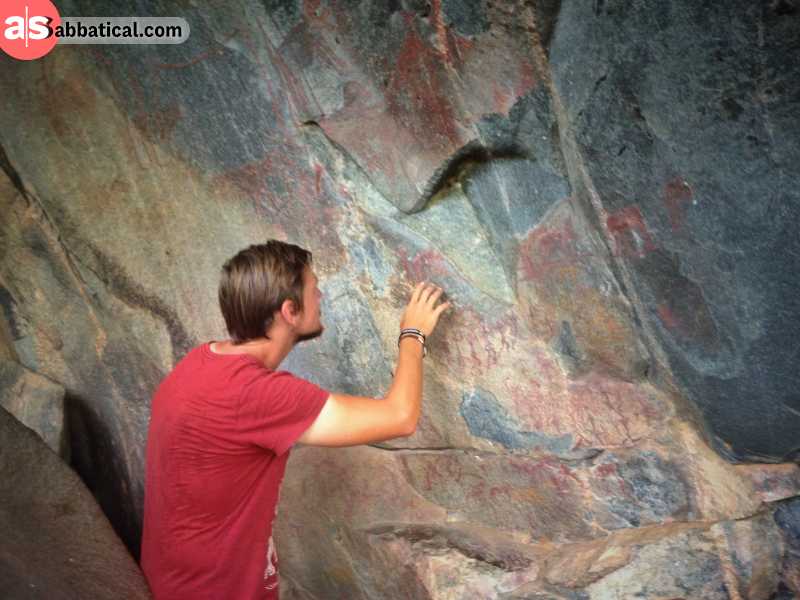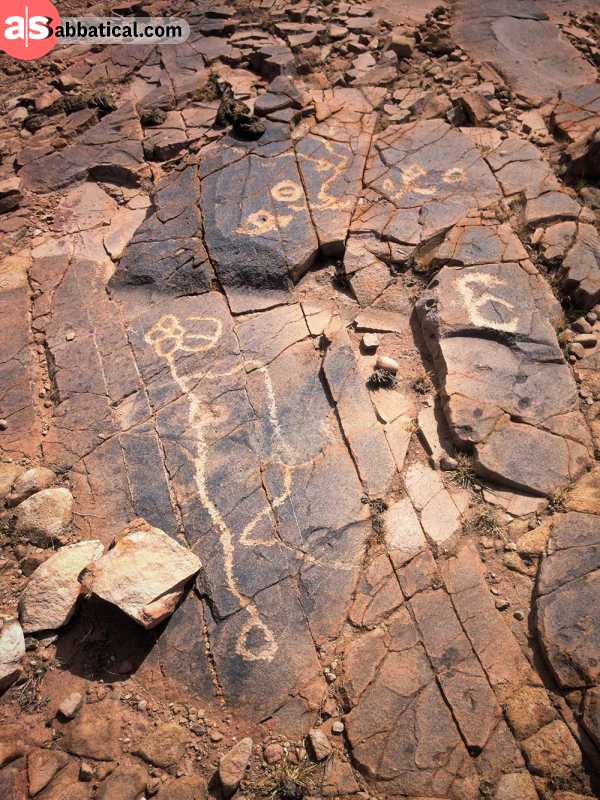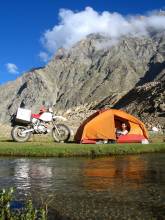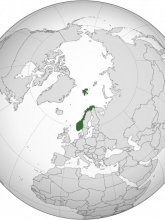Ancient African Rock Art Locations
Rock paintings and engravings are clear evidence of human artistic expression across Africa . Most of the African rock art are either in caves or rock shelters as that was a way of protecting them from any bad weather conditions. They all had a spiritual effect to them and acted as places of prayer or offerings. You will notice most of the paintings were from red ochre, though no one knows the real recipes. Whether you have an artistic touch or not, check out these various locations selected for you.
. Most of the African rock art are either in caves or rock shelters as that was a way of protecting them from any bad weather conditions. They all had a spiritual effect to them and acted as places of prayer or offerings. You will notice most of the paintings were from red ochre, though no one knows the real recipes. Whether you have an artistic touch or not, check out these various locations selected for you.
Nyero Rock Paintings
These paintings found in Uganda are situated on the eastern side about 200km from Kampala city. They are contained in three caves. The paintings are beautifully colored in white and red and were believed to be a sacred place for the gods in the ancient times. In one of the main rocks that bears a small cavity called the “pocket”, where early inhabitants used as a gift offer, to date the local community still follow the custom of putting money there as an appreciation of good deeds. Make a point to check if the money is there on your next visit to this African rock art. Maybe you could also donate to the gods! The caves are situated in such a serene area, and if you can hike on top of the rocks, you will get a good view of the surroundings.
are situated on the eastern side about 200km from Kampala city. They are contained in three caves. The paintings are beautifully colored in white and red and were believed to be a sacred place for the gods in the ancient times. In one of the main rocks that bears a small cavity called the “pocket”, where early inhabitants used as a gift offer, to date the local community still follow the custom of putting money there as an appreciation of good deeds. Make a point to check if the money is there on your next visit to this African rock art. Maybe you could also donate to the gods! The caves are situated in such a serene area, and if you can hike on top of the rocks, you will get a good view of the surroundings.
Tsodilo Hills
The country of Botswana boasts ownership of the Tsodilo rock art paintings found on the Tsodilo hills. With 4500 paintings to its name, in a stretch of only 20 kilometers, it is known to have the highest concentration of art rock paintings in the world. That gained it the name “Louvre of the desert”. A trek on the marked trails will take you to unique locations where you will discover hidden artworks, as you try to figure out their meanings. Some have clear animal prints but others you cannot tell what they are. Spend a night in one of the campsites as you enjoy the peaceful atmosphere. The locals still frequent here for prayers believing the ancestral spirits are still present.

Matobo Hills
Located in Southern Zimbabwe, the Matobo hills have an extraordinary look of balancing rock formations shaped out due to the granite plateau erosion. The grandiose rocks create a mystical feel, and no wonder the inhabitants considered it sacred. There are several caves which are accessible to the public. It is interesting how each cave portrays a different message, with each having different animals print on them.
Kome Rock Art
This African Rock Art can be found in little well-carved caves made of mud, in the country of Lesotho . The interesting part is that the people living in the caves in this era are descendants of the first inhabitants who built the caves originally. The caves came to be after the Basotho people were on the run from neighboring cannibals who were after them, and they then built the caves as a hideaway. Though most the paintings are faded, it is still possible to see a little of the markings indicating the ancestral presence. The caves are not easy to find as they are not very frequent. Depending on the weather you may need a four wheel drive so check with your agent before. Enjoy the beautiful landscapes and mountains around the area while at it.
. The interesting part is that the people living in the caves in this era are descendants of the first inhabitants who built the caves originally. The caves came to be after the Basotho people were on the run from neighboring cannibals who were after them, and they then built the caves as a hideaway. Though most the paintings are faded, it is still possible to see a little of the markings indicating the ancestral presence. The caves are not easy to find as they are not very frequent. Depending on the weather you may need a four wheel drive so check with your agent before. Enjoy the beautiful landscapes and mountains around the area while at it.
If you're looking for more travel inspiration for your Lesotho trip, you can head over Lesotho travel ideas or Lesotho road trip.
Cederberg
The Cederberg area is known for its rock art sites which are over 2500 paintings in total. The best way to view these sites is the Sevilla Rock Art Trail which is about a 7km walk that will let you see nine of the sites. It is a relatively easy hike comfortable no matter your level of fitness. It is believed the San tribesmen were the inhabitants here and were responsible for these rocks. Please note you need a special permit to trek and camp too.
Twyfelfontein
Twyfelfontein is positioned in a semi-arid region in Namibia and has a rich culture associated with the remarkable galleries of rock art. The very clear engravings are of animals like elephants, zebras, ostrich, and giraffes, which depict that the area had a diversity of wild animals approximated at over 2000 years ago. The rock art engravings are in the open air, and four routes are laid out well and give detailed descriptions of each. The inhabitants believed in spirits and rituals and frequented the rocks. The guides will, however, give you a full insight into what the African rock art meant here.
and has a rich culture associated with the remarkable galleries of rock art. The very clear engravings are of animals like elephants, zebras, ostrich, and giraffes, which depict that the area had a diversity of wild animals approximated at over 2000 years ago. The rock art engravings are in the open air, and four routes are laid out well and give detailed descriptions of each. The inhabitants believed in spirits and rituals and frequented the rocks. The guides will, however, give you a full insight into what the African rock art meant here.
What’s your favorite African Rock Art site?
The main purpose of visiting any of these African rock art sites is to learn about the culture of the inhabitants in different generations. The tours are best guided as the locals have excellent information that dates back to centuries ago. It is obvious they were not painted or engraved for no reason and had a deeper meaning. Hike, walk or crawl, whatever it takes let’s get rocking!













